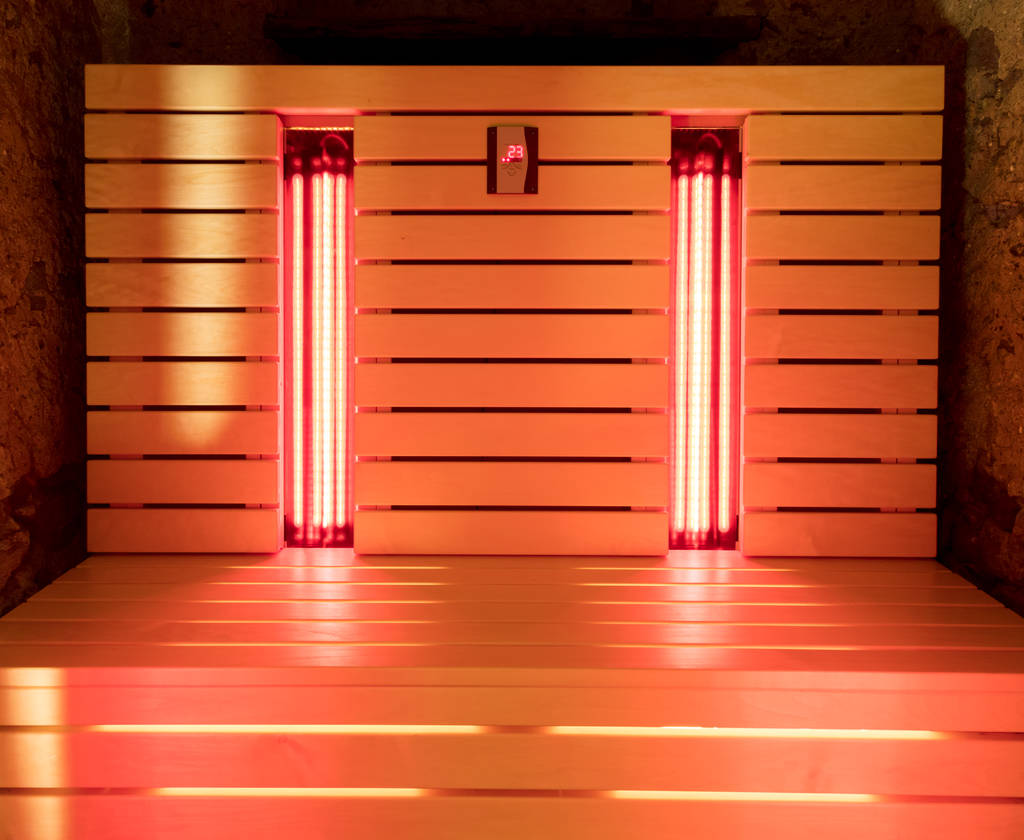What Is An Infrared Sauna?
An infrared sauna has improved upon the concept of traditional saunas. Infrared saunas, like traditional saunas, are made of wood, usually hemlock or western cedar, and heat the object rather than the air, resulting in a gentle dry therapeutic wave of heat that is a safe and enjoyable way to sweat out harmful chemicals and heavy metals on a cellular level. Because no water or rocks are required, there will be no steam, which can be overwhelming to most people, and they will operate at a lower temperature (150-degree Fahrenheit maximum).
Because infrared heat rays are gentle and relaxing, you can sit in the sauna for longer periods (usually 30 minutes). As the invisible infrared rays penetrate into the body, the core body temperature rises a couple of degrees. To generate a good sweat, the increase in core body temperature causes a fake fever.
Beautifully constructed, with the ability to brighten or intensify the coloured lights, it heats up in about 20 minutes and is simple to assemble. I have Fibromyalgia and bought this sauna to help with my symptoms. As a result, many people are experiencing more significant improvements in their overall health. For more information visit floatandrestore.com.au today!

How Does Perth Infrared Sauna Work?
Unlike traditional saunas, which use rocks, water, and a heater to heat the air, an infrared sauna uses direct heat transfer via nano carbon heating panels that heat the objects directly. This method of directly heating things (walls, floors, people) is gradually released into the atmosphere. As a result, the ambient temperature is more pleasant and consistent.
Infrared is a visible part of the Sun’s spectrum that we perceive as heat. There are three types of infrared radiant heat: near, middle, and far. We can feel the effects of far-infrared heat even though we can’t see it.
The Benefits Of Infrared Heat Therapy To Humans.
Increases the levels of oxygen and white blood cells in your blood while helping to increase blood circulation without putting a strain on your heart.
- Improves sleep and relaxation by stimulating collagen production in the human body.
- Detoxification
- Slimming down
- Muscle soreness relief
- Clearer and tighter skin relief from joint pain such as arthritis
- Better circulation
- Assistance for people suffering from chronic fatigue syndrome
Additionally, it aids in the development of a stronger immune system, improved cardiovascular health, and the ability to heal more quickly from soft tissue injuries such as tears, pulls, and sprains.
How To Prepare For An Infrared Sauna?
The day before your sweat sesh, make sure you drink plenty of water and get plenty of rest. You’ll be less likely to pass out or become dehydrated as a result of this.
You should also bring some form of entertainment in case you become bored. If you’re fidgety like me, having a podcast or your favourite music on hand is helpful, as sitting silently while sweating can quickly make you antsy (and I say that knowing firsthand).
Are They Worth It?
Although I still have as many questions as answers about infrared saunas and whether or not they ** work, I do know one thing for certain: they produce a sensation similar to the endorphin rush you get after working out without the majority of the benefits. You’ll be hot and bothered. The rate of your heart will speed up. A #wokeuplikethis glow will appear on your skin for a short time. Depending on where you go, it may feel like a posh wellness experience.
How To Prepare For An Infrared Sauna?
The day before your sweat session, drink plenty of water and get plenty of rest. This reduces your chances of fainting or becoming dehydrated during the experience.
You should also bring some form of entertainment with you in case you become bored. If you’re fidgety like me, having a podcast or your favourite music on hand is beneficial, as sitting silently while sweating can quickly make you antsy (and I say that knowing firsthand).
What To Expect At An Infrared Sauna?
Most studios offer 30- and 60-minute sessions (Chillhouse offers 60- and 75-minute sessions) so that sweaters have plenty of time to rinse off afterwards. Many people believe that infrared sauna sessions are expensive, as they do with most wellness treatments. They are, however, more approachable than you might believe.
I felt refreshed, revived, and better than ever after 45 minutes in an infrared sauna (unlike when I’m dizzy and wheezing after only 15 minutes in a steam sauna), just as I do after mermaid, wheelbarrow, and plank. To supplement my former workouts, calm my nerves, stabilize my immune system, and keep my mood in check, I like to incorporate regular infrared treatments into my monthly routine (though I’d happily oblige to weekly if my schedule and wallet permitted).
Why Infrared (And Not Traditional)?
In 1112, the Finns had a lot going for them, but as with many 900-year-old technologies, better and more efficient ones exist today. Most people cannot tolerate such heat for long periods in a traditional high-heat sauna, which can reach 220 degrees Fahrenheit. In addition, high temperatures cause nasal passages to dry out, which can become inflamed and painful. Although water was introduced to alleviate this, the fact remains that the body cannot tolerate such high temperatures. The temperature in an infrared sauna is usually between 100 and 130 degrees, which is much more tolerable (some might even say comfortable) than the temperature in a traditional sauna. As evidenced by the reduced amount of water in perspiration and the increased amount of toxins, science has also shown that these temperatures and the environment encourage a more efficient shedding of toxic material in the body. The resonant absorption that occurs in an IR sauna booth has been shown to increase the number of toxins excreted by the liver, kidneys, and even hair.